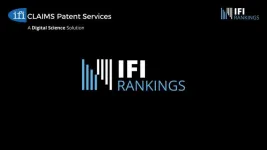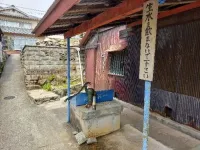(Press-News.org) An international team of researchers led by the University of California San Diego has developed a new strategy to enhance pharmaceutical production in Chinese hamster ovary (CHO) cells, which are commonly used to manufacture protein-based drugs for treating cancer, autoimmune diseases and much more. By knocking out a gene circuit responsible for producing lactic acid—a metabolite that makes the cells’ environment toxic—researchers eliminate a primary hurdle in developing cells that can produce higher amounts of pharmaceuticals like Herceptin and Rituximab, without compromising their growth or energy production.
The research, published on Jan. 14 in Nature Metabolism, also challenges long-held assumptions about the necessity of lactic acid metabolism in cell survival.
CHO cells have become essential tools in modern medicine, serving as the “living factories” that produce more than half of today’s top-selling protein-based drugs, including therapies for cancer, autoimmune diseases and more. But despite their success, they have one main flaw: low protein yield. CHO cells don’t always produce enough of the desired drugs to meet demand, which makes these pharmaceuticals more costly.
Now, researchers have developed an approach that promises to improve the yields of CHO cells in drug production. The approach targets a key metabolic process: the secretion of lactic acid.
During protein production, CHO cells release lactic acid as a byproduct of their metabolism. The more active they are, the more lactic acid they produce. “As we grow cells to produce more drugs, lactic acid builds up and kills the cells, thus reducing the yields of life-saving drugs while driving up manufacturing costs,” said study senior author Nathan Lewis, who led the study while serving as a professor in the Shu Chien-Gene Lay Department of Bioengineering and Department of Pediatrics at UC San Diego (now at the University of Georgia).
Efforts to stop lactic acid production have so far focused on inhibiting the enzyme responsible for this process, lactate dehydrogenase. But these efforts have been unsuccessful, as lactate dehydrogenase is essential for cell survival. “If you try to remove it or block it, the cells die,” said Lewis. “This has been demonstrated in multiple studies.”
In the new study, Lewis and colleagues, co-led by UC San Diego bioengineering Ph.D. alumnus Hooman Hefzi (now a professor at Technical University of Denmark), took a different approach. Instead of focusing on lactate dehydrogenase itself, they mapped out a network of genes—five in CHO cells and six in human cells—that work together to control lactic acid production. The researchers hypothesized that this gene circuit was responsible for the cells’ overproduction of lactate.
When the researchers knocked out this gene circuit, the CHO cells stopped producing lactic acid. Moreover, the cells demonstrated improved growth and, compared to similarly treated controls, produced significantly higher yields of protein-based drugs such as Herceptin and Rituximab, which are used to treat breast cancer and lymphoma, respectively. The modified CHO cells also successfully produced a variety of other therapeutic proteins, including Enbrel, a treatment for rheumatoid arthritis and psoriasis, and erythropoietin, which stimulates red blood cell production.
Challenging the Warburg effect
This work also sheds light on a key biological process known as the Warburg effect. First observed in cancer cells by German scientist Otto Warburg 100 years ago, the Warburg effect refers to a metabolic shift that causes cells to overproduce lactic acid. This process has long been thought to be critical for cell proliferation and energy production.
Yet, the new research challenges that notion. By eliminating the Warburg effect in CHO cells, researchers found that the cells maintained normal growth rates and energy output. This suggests that the Warburg effect may not be as essential as previously hypothesized.
The researchers note that these newly engineered “Warburg-null” CHO cells are also compatible with industrial cell line development processes. That means these cells could easily be integrated into real-world drug production, which could be a game-changer for biomanufacturing.
The team has discovered additional tweaks that further boost the CHO cells’ productivity, and are continuing to study their implications on the entire drug manufacturing process.
“Our work has the potential to make drug production far more efficient, which could significantly lower manufacturing costs,” said Lewis. “By improving the productivity of these cells, we’re taking an important step toward making life-saving therapies, like cancer treatments and gene therapies, more affordable and accessible to patients worldwide.”
Paper: “Multiplex genome editing eliminates the Warburg Effect without impacting growth rate in mammalian cells.”
This work was supported by the Novo Nordisk Foundation through the Technical University of Denmark, the National Institute of General Medical Sciences, and the European Union’s Horizon 2020 research and innovation programme under the Marie Skłodowska-Curie Actions.
Disclosures: A patent based on this work has been issued with Hooman Hefzi and Nathan E. Lewis as inventors (US Patent 11,242,510, WO2017192437).
END
Genetic tweak optimizes drug-making cells by blocking buildup of toxic byproduct
New discovery about lactic acid metabolism in cells resolves a decades-old challenge in biomanufacturing
2025-01-14
ELSE PRESS RELEASES FROM THIS DATE:
University of Birmingham researchers awarded grant to tackle early-stage heart disease in chronic kidney disease
2025-01-14
New research funding will investigate the early stages of heart disease associated with chronic kidney disease led by the University of Birmingham.
Dr Davor Pavlovic will lead an international research team after receiving almost £300,000 from the British Heart Foundation to understand the mechanisms driving the early stages of CKD-associated cardiomyopathy.
The research approach will allow detailed investigation of cellular and electrophysiological changes before irreversible damage to the heart occurs. Researchers will also test whether in the setting of CKD, early treatment can reverse or prevent heart disease.
The research will be ...
Researchers harness AI to predict cardiovascular risk from CT scans
2025-01-14
CLEVELAND—Researchers at Case Western Reserve University, University Hospitals and Houston Methodist will harness the power of artificial intelligence (AI) to more accurately predict risk of heart failure and other cardiovascular events, including estimating when an adverse event might occur, by developing an AI model that “learns” from patient scans.
Cardiovascular disease is the leading cause of death worldwide, claiming over 17 million lives every year, according to the American Heart Association. Accurately ...
Samsung takes top spot in U.S. patents for third year running while TSMC rises into second place; after four-year falloff, grants increase nearly 4%
2025-01-14
New Haven, Conn., Jan. 14, 2025—After four years of decline, U.S. patent grants headed upward, rising 3.8 percent from calendar year 2023 to 324,043 and Samsung retained the top spot for the third year in a row, according to IFI CLAIMS Patent Services, the world’s most trusted patent data source.
IFI CLAIMS Patent Services is a Digital Science company that compiles and tracks data from the U.S. Patent and Trademark Office (USPTO) and other patent-issuing agencies around the globe. IFI translates its world-leading data into an annual U.S. Top 50 and ...
HKU ecologist highlights critical gaps in global wildlife trade monitoring
2025-01-14
Wildlife trade poses one of the greatest threats to the survival of numerous species. According to the Intergovernmental Science-Policy Platform on Biodiversity and Ecosystem Services (IPBES) at least 50,000 species are involved in trade. However, while this figure already seems huge, it risks overlooking less traditional sectors of wildlife trade, such as the pet or fashion trade. For instance, recent data shows that the number of butterflies traded exceeds the total number of terrestrial arthropods in the IPBES assessment. This raises a critical question: How many ...
Smoking may lead people to earn less
2025-01-14
A new paper in Nicotine & Tobacco Research, published by Oxford University Press, finds that smoking has a negative effect on earnings among younger workers. This is particularly true among the less well educated.
The adverse health effects of smoking are well known. Smoking increases the risk of various cancers, respiratory issues, and cardiovascular diseases, with approximately 14% of all deaths in 2019 attributed to smoking. Despite smoking rates declining since the 1990s, in 2019 18% of women and 27% of men in high income countries still smoked.
Tobacco smoking has ...
Hiroshima flooding: A case study of well usage and adaptive governance
2025-01-14
Society is often vulnerable to disasters, but how humans manage during and after can turn devastation into opportunities for improved resilience.
For instance, private wells are attracting attention as an alternative resource for securing water for daily use and consumption in the event the water supply is cut off after a disaster. However, there are few records on how wells are used in the confusion of disasters, so detailed research is needed to promote the use of emergency wells.
Professor Takahiro Endo of the Graduate School of Sustainable System Sciences at Osaka Metropolitan University conducted a survey on the use ...
New survey finds over half of Americans are unaware that bariatric surgery can improve fertility
2025-01-14
St. Petersburg, Fla - Welcoming a newborn is something many couples dream of doing, but it can get complicated when conceiving becomes a roadblock. Infertility affects one in six people, but obesity can also be a problem. When diet and exercise aren’t enough to lose weight, bariatric surgery can become an option. Yet a new national survey by Orlando Health finds that 56% of Americans do not know that bariatric surgery is an effective way to improve fertility.
“Every day we have more patients ...
World’s oldest 3D map discovered
2025-01-14
Researchers have discovered what may be the world’s oldest three-dimensional map, located within a quartzitic sandstone megaclast in the Paris Basin.
The Ségognole 3 rock shelter, known since the 1980s for its artistic engravings of two horses in a Late Palaeolithic style on either side of a female pubic figuration, has now been revealed to contain a miniature representation of the surrounding landscape.
Dr Anthony Milnes from the University of Adelaide’s School of Physics, Chemistry and Earth Sciences, participated in the research ...
Metabolomics-driven approaches for identifying therapeutic targets in drug discovery
2025-01-14
This review is led by Professor. Tengfei Xu (Research Center for Clinical Pharmacy, College of Pharmaceutical Sciences, Zhejiang University) and Professor. Su Zeng (Research Center for Clinical Pharmacy, College of Pharmaceutical Sciences, Zhejiang University). The author emphasizes metabolomics’ critical role in advancing our understanding of disease mechanisms and accelerating targeted drug development, while acknowledging current challenges in the field.
Metabolomics, as a powerful tool, can captures phenotypic changes induced by exogenous compounds, offering a valuable ...
Applications of ultrafast nano-spectroscopy and nano-imaging
2025-01-14
Optical microscopy has long been a fundamental tool for scientific discovery. Yet, traditional far-field techniques are limited by diffraction, restricting their resolution to hundreds of nanometers, which can be inadequate for capturing phenomena in quantum and solid-state materials. With the emergence of tip-based microscopy capable of achieving atomic-scale spatial resolution, near-field optical nano-spectroscopy and nano-imaging have evolved into versatile tools for characterizing the optical properties of materials at the nanoscale. When further combined with ultrafast pump-probe ...
LAST 30 PRESS RELEASES:
How the parasite that ‘gave up sex’ found more hosts – and why its victory won’t last
When is it time to jump? The boiling frog problem of AI use in physics education
Twitter data reveals partisan divide in understanding why pollen season's getting worse
AI is quick but risky for updating old software
Revolutionizing biosecurity: new multi-omics framework to transform invasive species management
From ancient herb to modern medicine: new review unveils the multi-targeted healing potential of Borago officinalis
Building a global scientific community: Biological Diversity Journal announces dual recruitment of Editorial Board and Youth Editorial Board members
Microbes that break down antibiotics help protect ecosystems under drug pollution
Smart biochar that remembers pollutants offers a new way to clean water and recycle biomass
Rice genes matter more than domestication in shaping plant microbiomes
Ticking time bomb: Some farmers report as many as 70 tick encounters over a 6-month period
Turning garden and crop waste into plastics
Scientists discover ‘platypus galaxies’ in the early universe
Seeing thyroid cancer in a new light: when AI meets label-free imaging in the operating room
Neutrophil-to-lymphocyte ratio may aid risk stratification in depressive disorder
2026 Seismological Society of America Annual Meeting
AI-powered ECG analysis offers promising path for early detection of chronic obstructive pulmonary disease, says Mount Sinai researchers
GIMM uncovers flaws in lab-grown heart cells and paves the way for improved treatments
Cracking the evolutionary code of sleep
Medications could help the aging brain cope with surgery, memory impairment
Back pain linked to worse sleep years later in men over 65, according to study
CDC urges ‘shared decision-making’ on some childhood vaccines; many unclear about what that means
New research finds that an ‘equal treatment’ approach to economic opportunity advertising can backfire
Researchers create shape-shifting, self-navigating microparticles
Science army mobilizes to map US soil microbiome
Researchers develop new tools to turn grain crops into biosensors
Do supervised consumption sites bring increased crime? Study suggests that’s a myth
New mass spec innovation could transform research
Maternal nativity, race, and ethnicity and infant mortality in the US
Migration-related trauma among asylum seekers exposed to the migrant protection protocols
[Press-News.org] Genetic tweak optimizes drug-making cells by blocking buildup of toxic byproductNew discovery about lactic acid metabolism in cells resolves a decades-old challenge in biomanufacturing







